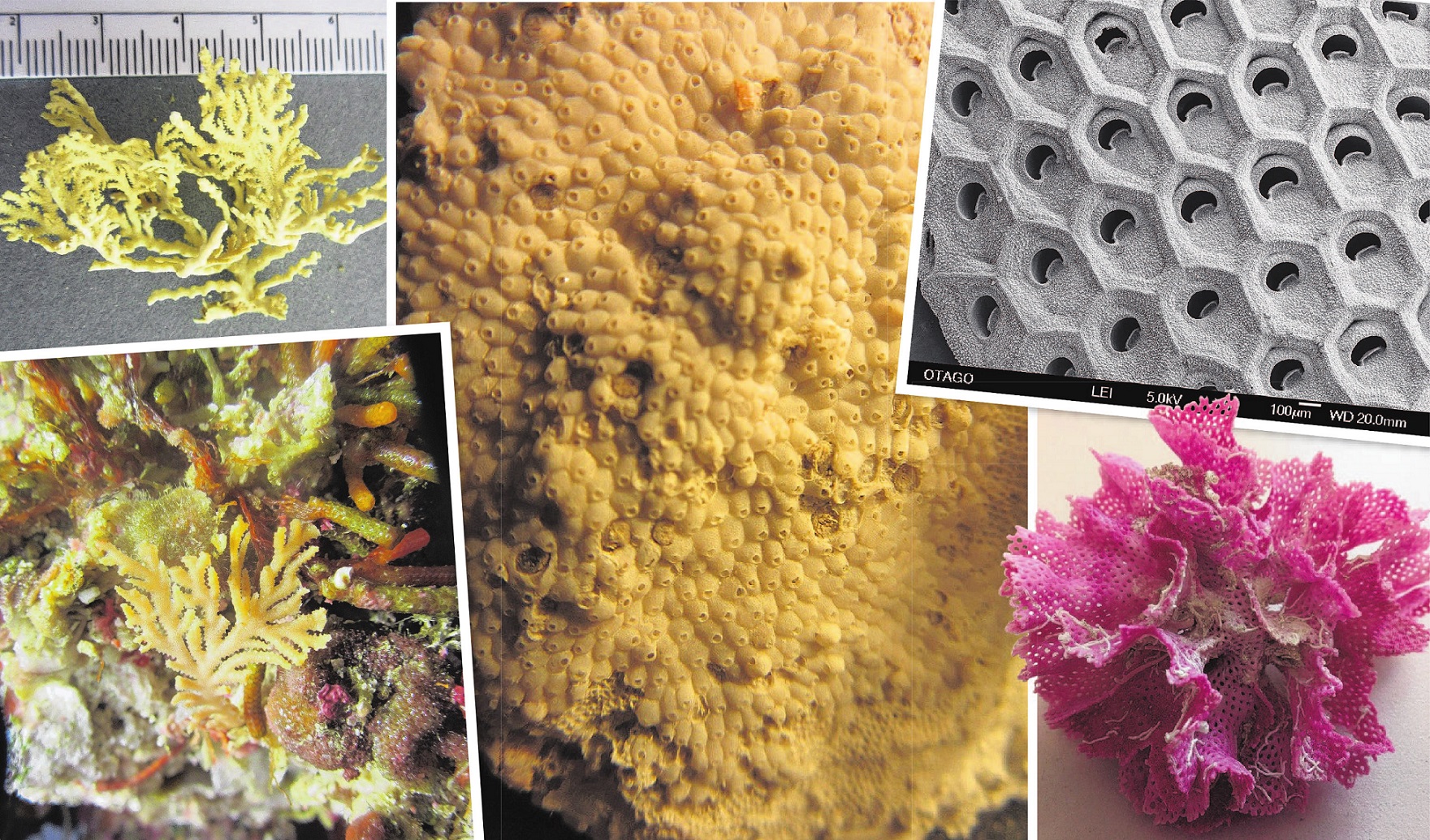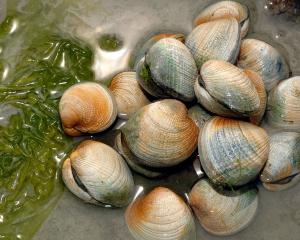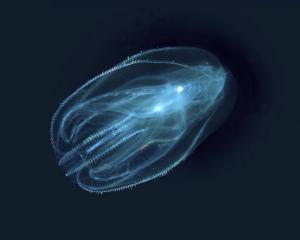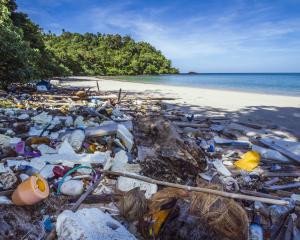
There are creatures out in the ocean depths that are so different from us, they might as well be aliens from another planet.
Not for them the self-centred life of doing all the chores themselves. Instead, they work together like a family.
More than just related, separate and yet identical, they work together for the common good.
Did you know you are a unitary organism?
Even most biologists don’t realise they both are and mostly study unitary organisms — creatures that function on all levels as solitary individuals. When people talk about animals, that’s the kind of animals they mean: cows, penguins, tuna, geckos, snails, weta.
Many of us are less aware of colonial animals, who live as a community rather than as individuals.
In the sea, there are a variety of creatures who live this way, including sponges, jellyfish, corals, ascidians, and my own research focus: bryozoans.
Let’s look at a typical marine bryozoan colony. A big one is about the size of a person’s hand — usually they are more tip-of-finger-sized or smaller.
Made of thousands of tiny identical units, they can take a variety of shapes: a flat circular spot on seaweed or rocks, a fan, a net, branching sticks, feathers, flowers, lentils, even indeterminate globs.
Living ones are usually pink or orange at their brand-new tips, but grey and covered with gunk in the older parts.
When you poke them, they are rigid or crusty, not soft like a seaweed.
You have to really squint to see the individuals from which a colony is made — they might be as large as 1mm, but usually they are smaller.
So a colony is modular, constructed from a series of clones, each budded off from a single starter.
Each clone is a tiny multi-cellular individual animal, with tentacles for catching food particles out of the water, a digestive system, muscles, nerves, and an outer skin that collects minerals from seawater and builds a protective shell.
Neighbouring clones are connected by tubes to each other’s boxes, and thus they can exchange nutrients and messages.
Even though they are all genetically identical, some grow up different, with specialised roles: egg-maker, cleaner, defender. Those that cannot catch food are nurtured by their neighbours.
It’s like a building full of apartments. Each flat is a unit, but they share heat and internet and power and the lifts. Each family is in contact with its neighbours. And when a family can’t gather its own food (maybe it’s busy having a baby or it’s sick), the neighbours provide.
We are more familiar with the unitary life: get some eggs and sperm together, grow an embryo into a juvenile and then an adult, produce more eggs and sperm, until the arrival of old age and death. If injury occurs, it can be debilitating and/or fatal.
While some of the details of this life-cycle vary among species (larvae, cocoons, teenagers), the basics are intuitively recognisable.
A bryozoan colony, however, is different. It adds new individuals as required. It can repair damaged clones, without evident cost to the colony.
Old ones might die, but it doesn’t matter to the colony. In fact, when clones get too old to function, they often shrivel up and leave their boxes vacant, so the colony can insert a new occupant (just like that apartment building). While the individuals come and go, the colony lives on.
Bryozoan colonies can live for decades; some coral colonies are more than 4000 years old.
What’s more, colonies can reproduce in three different ways. First, they can add clones to themselves.
Second, they can fall into pieces (either by design or due to accident) and start new colonies.
Third, they can produce eggs and sperm, combine with those from other colonies, and produce larvae that will settle on a surface to form new, genetically different colonies.
Bryozoans in the northern hemisphere are small crusty things. Most textbooks produced up there call them ‘‘sea mats’’ and dismiss them as minor.
New Zealand, however, is home to more than 1000 species, many of which are big, beautiful, and ecologically significant.
The Otago Shelf bryozoan thickets are famous among bryozoan aficionados; they form patches of branches and nets out on the mid-shelf (in 60m-80m of water depth), sheltering juvenile fish and providing feeding grounds for penguins and seals.
If the Government ever gets around to approving the marine reserve network for Otago, proposed way back in 2018, there will be a nice big one around these bryozoan treasures of the deep.
You’d think they would be safe out there, deep on the shelf. But we need marine protection to stop bottom trawling from crushing colonies.
Among the protected will be a newly-named purple blade-shaped bryozoan: Adeonellopsis macewindui — named for the purple light sabre of a Jedi knight.
Not space aliens, but part of the diverse spectrum of life on Earth, bryozoans are beautiful and fascinating. I could tell so many more stories about how cool they are.
But in the meantime, though I hesitate to draw a moral from the life cycles of marine invertebrates, it does appear that human society would benefit from a more colonial approach to life, in which the needs of community are balanced with those of individuals.
- Abby Smith is a professor of marine science at the University of Otago; she has a fossil bryozoan named after her, Exochella abigailae.












